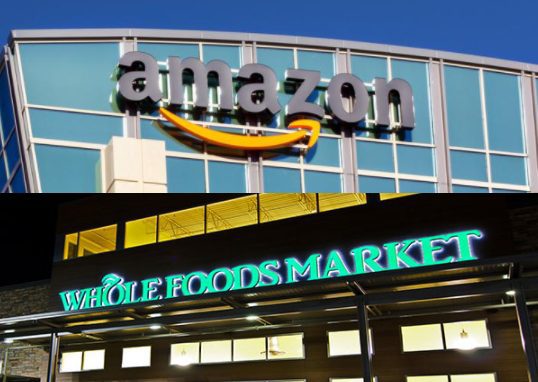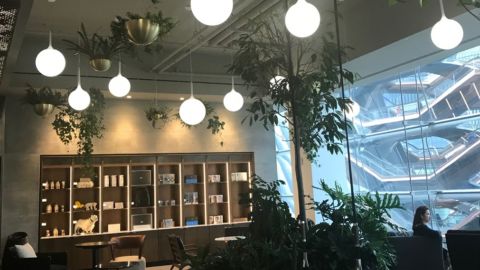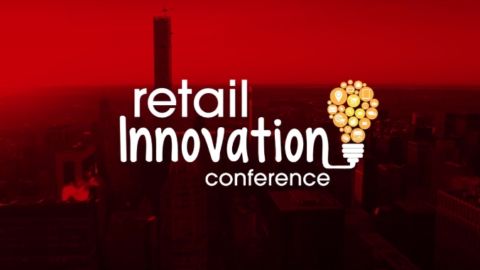The landscape of the grocery industry is ripe for drastic and dramatic changes in the wake of Amazon’s $13.7 billion acquisition of Whole Foods Market. With the e-Commerce giant making its monumental grocery push, top supermarkets will now be forced to duke it out for pricing superiority, supply chain efficiency and convenient delivery. Additionally, food delivery services such as Instacart will now face off against a fulfillment leader with extremely deep pockets.
But despite many reports, the deal doesn’t represent a death knell for grocery, particularly its major players. Unlike categories such as apparel and department stores, grocery remains a relatively stable market since it doesn’t drive discretionary spending — consumers still have to buy food.
While Amazon/Whole Foods will capture a combined 2.5% market share within grocery, leaders Walmart (17.3%) and Kroger (8.9%) are still leading the pack, with other top players Albertsons/Safeway (5.6%) and Costco (5.1%) still ahead in share percentage. If anything, the transaction is likely to foster an even more competitive environment, one that has already been escalated by a brewing price war. Additionally, Amazon’s target audience remains its Prime members, so the company is still focused on its clientele of heavily populated urban and suburban areas.
“They aren’t going after the Middle America market,” said Cooper Smith, Head of Amazon Research at L2 in an interview with Retail TouchPoints. “There’s enough of the market for money to be spread out throughout multiple retailers. I do think that Amazon will become a lead player in this space in the U.S. within the next three to five years, but Walmart is still going to be a leading grocery store five years from now, Kroger will still be a leading grocery store, and now you have the European grocers entering the market. This is going to be the most competitive market in retail over the next five years.”
Unfortunately, mom-and-pop grocers are likely to be affected by the acquisition on a far greater scale than their larger counterparts. With profit margins as slim as they are, it’s tougher for them to compete in a massive price war.
“We know that no matter what type of product shoppers are buying, price is always the number one factor,” Smith said. “Then you have convenience and service, but price is always number one. Your regional mom-and-pop shops simply cannot compete in this day and age of retail where the innovation in supply chain and technology is so sophisticated.”
Like retailers in any other sector, grocers are going to have to learn from Amazon’s customer-first mentality to keep up with the competition, whether through:
-
More flexible payment options;
-
More flexible shipping options;
-
Differentiated, private label product offerings;
-
Taking control of/digitizing their own supply chain; and
-
Prioritizing the growth of their e-Commerce offering.
“What this points to is the potential of the e-Commerce grocery channel in the U.S.,” said Stewart Samuel, Program Director at food and consumer goods research organization IGD in an interview with Retail TouchPoints. “A lot of retailers have been hesitant about putting investment into that channel. Although it remains a fairly small part of the market overall, many of these retailers are holding back in the wait-and-see position, and they probably need to move a little faster.”
Delivery Services Set To Take Biggest Hit
While the Whole Foods acquisition is setting the table for competition down the road, its most immediate impact is likely to be on grocery delivery services, where AmazonFresh now has a leg up on players such as Instacart, FreshDirect, Postmates and Ahold’s Peapod.
The third-party grocery delivery market was already very saturated, so it was bound to have consolidations at some point regardless of Amazon’s delivery push, according to Smith. But with its outstanding fulfillment network in play, Amazon can take an even bigger chunk of the market share while competitors struggle to keep up.
“Now that Amazon has officially jumped into grocery with both feet, this news is very bad for the third-party vendors that provide delivery services or picking and packing services,” Smith said. “The Whole Foods deal was good for Amazon, good for Whole Foods and horrible for Instacart. I just don’t see a future where Amazon is going to pay contract workers $10 per hour to pick and pack groceries for Prime members in grocery stores. I see Amazon bringing a lot of that service in house — they can already provide a lot of that through many of their Prime services.”
As Amazon goes, other major grocers will follow, Smith noted. That means Walmart, Target, Costco and Kroger, among others, are likely to adopt similar strategies to bring their fulfillment and delivery services in-house, as opposed to outsourcing them to third-party vendors that don’t require a full-time investment.
Beyond the uncertainty that now faces Instacart, FreshDirect and other delivery services, meal kit services are being affected as well. The Whole Foods acquisition certainly impacts Blue Apron, which recently filed for an IPO that could raise more than $500 million. While Blue Apron isn’t a typical delivery service — it delivers ready-to-cook meal kits instead of groceries from supermarkets —many of the foods it offers are comparable to the natural, organic items from Whole Foods. Blue Apron has yet to make a profit, losing $54.9 million in 2016, and Amazon’s presence will only exert continued pressure to generate more revenue.
Amazon Enters E-Grocery At An Optimal Time
Amazon is picking a great time to increase its online grocery footprint, since the sector is still in its infancy. Online grocery spending represented only 4.3% of U.S. food and beverage sales in 2016, but could potentially grow to 20% by 2025, according to a report from Food Marketing Institute and Nielsen.
“When e-Commerce hits 20% of a category, that’s really when you see a point of no return,” Smith of L2 said. “It suggests that consumer behavior has gone mainstream in terms of buying those types of products online.”
Additionally, the overall consumer base is more willing to purchase groceries online than it was a few years ago. Nearly one third (31.7%) of Millennials are more willing to purchase groceries online than they were three years ago, well above the 22.1% of older adults aged 36 to 55 that are willing to do so, according to an AdobeDigital Price Index.
Key Competitive Arena: The Digital Supply Chain
Today’s retailers are going to have to ramp up their supply chain capabilities with digital innovation to reduce costs, according to Bernard Goor, VP and Industry Evangelist at cloud supply chain solutions platform provider One Network.
“There has been no best-in-class grocer or retailer that doesn’t have a best-in-class supply chain and fulfillment operation,” said Goor in an interview with Retail TouchPoints. “Grocers have to leverage technology to share high-fidelity information across all the parties in your B2B world, in order to make optimized decisions in real-time. All of those partners have to be on a common network.”
Understandably, grocery stores frequently struggle to innovate quickly due to their thin margins, which are often 5% or less of operating income. But they still need to strive for improvement. Case in point: the top four publicly held grocers — Walmart, Kroger, Costco and Target — have a 77% cost-of-goods sold (COGS) as a percentage of sales, while their average inventory outstanding is 41 days, according to Goor. In comparison, Whole Foods has a smaller COGS rate (66%), with higher gross margins and 18 days inventory outstanding, illustrating one of the reasons why Amazon has such a keen interest in the retailer.
“There is no reason for them to carry 41 days of inventory,” Goor noted. “Keep in mind that their CPG suppliers carry 65 to 70 days of inventory. When you look at the total inventory in the chain, it’s highly inefficient today. And despite those high levels with inventory, they still have problems keeping products on the shelves.”
To shorten these supply chains, these retailers must leverage:
-
A single version of consumer demand that converts to an order forecast;
-
True engagement of all parties within the network as a single place of business; and
-
Artificial intelligence technology to streamline planning and execution stages within the same timeframe.
While many headlines related to the acquisition may have conveyed doom and gloom throughout grocery, Amazon’s backing of Whole Foods will force these retailers to improve their fulfillment capabilities to adapt effectively, which benefits more retailers — and consumers — in the long run.
“For the retailer, last mile logistics is 80% of the cost associated with e-Commerce, so the closer they can get their products to their own supply chain [and] to the end consumer, the more cost-effective e-Commerce will be,” Samuel said. “Retailers need to look at their store network and figure out how they can best improve that network to do that last mile delivery as cost-effectively as possible.”













